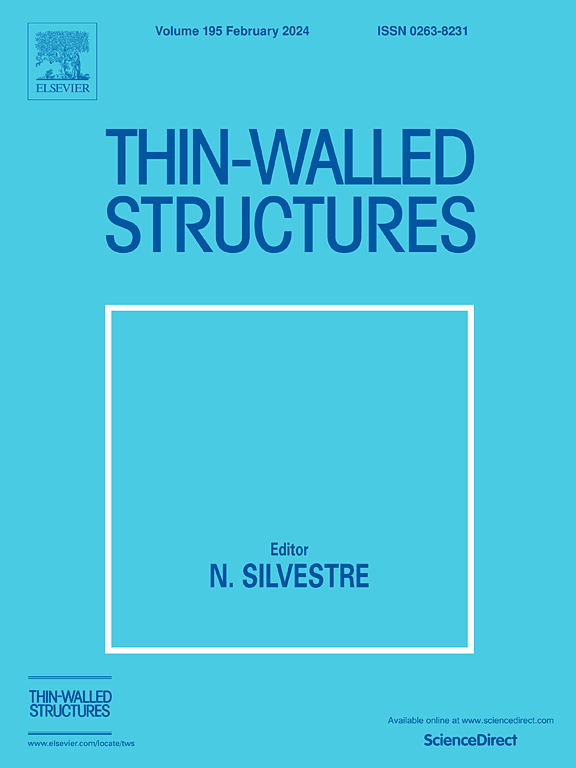Numerical and experimental analyses of the coupled impact of corrosion and cracks on the ultimate strength of stiffened plates
IF 5.7
1区 工程技术
Q1 ENGINEERING, CIVIL
引用次数: 0
Abstract
The objective of this study was to analyse how corrosion and cracks acting simultaneously affect the compressive strength of stiffened plates used in ship structures. The analysis covered experiments and numerical simulations. It was found that corrosion and cracks progressing together can significantly reduce the strength of these plates, especially slender ones, which may lose up to 60% of their capacity compared to intact plates. Due to its widespread nature, corrosion tends to impact strength more than cracking, leading to a considerable loss of stiffness crucial for preventing buckling. The employed Finite Element analyses were consistent with experimental results, validated by modern techniques such as Digital Image Correlation. This model effectively captured the effects of corrosion degradation and cracks on thin-walled structures but showed some discrepancies, particularly with slender plates. These analyses enhance the understanding of how complex ageing phenomena impact the integrity of steel structural components. Future research should investigate how these degradation mechanisms affect ship hulls, employing random modelling techniques for consequence reliability analysis. Additionally, further experiments on complex structural components will be important.
腐蚀与裂纹对加筋板极限强度耦合影响的数值与实验分析
本研究的目的是分析腐蚀和裂纹同时作用如何影响船舶结构中使用的加筋板的抗压强度。分析包括实验和数值模拟。研究发现,腐蚀和裂纹一起发展会显著降低这些板的强度,特别是细长的板,与完整的板相比,它们可能损失高达60%的容量。由于其广泛的性质,腐蚀往往比开裂更倾向于冲击强度,导致相当大的刚度损失,这对防止屈曲至关重要。所采用的有限元分析与实验结果一致,并通过数字图像相关等现代技术进行了验证。该模型有效地捕获了薄壁结构的腐蚀退化和裂纹的影响,但显示出一些差异,特别是细长板。这些分析增强了对复杂老化现象如何影响钢结构部件完整性的理解。未来的研究应该研究这些退化机制如何影响船体,采用随机建模技术进行结果可靠性分析。此外,对复杂结构部件的进一步实验将是重要的。
本文章由计算机程序翻译,如有差异,请以英文原文为准。
求助全文
约1分钟内获得全文
求助全文
来源期刊

Thin-Walled Structures
工程技术-工程:土木
CiteScore
9.60
自引率
20.30%
发文量
801
审稿时长
66 days
期刊介绍:
Thin-walled structures comprises an important and growing proportion of engineering construction with areas of application becoming increasingly diverse, ranging from aircraft, bridges, ships and oil rigs to storage vessels, industrial buildings and warehouses.
Many factors, including cost and weight economy, new materials and processes and the growth of powerful methods of analysis have contributed to this growth, and led to the need for a journal which concentrates specifically on structures in which problems arise due to the thinness of the walls. This field includes cold– formed sections, plate and shell structures, reinforced plastics structures and aluminium structures, and is of importance in many branches of engineering.
The primary criterion for consideration of papers in Thin–Walled Structures is that they must be concerned with thin–walled structures or the basic problems inherent in thin–walled structures. Provided this criterion is satisfied no restriction is placed on the type of construction, material or field of application. Papers on theory, experiment, design, etc., are published and it is expected that many papers will contain aspects of all three.
 求助内容:
求助内容: 应助结果提醒方式:
应助结果提醒方式:


